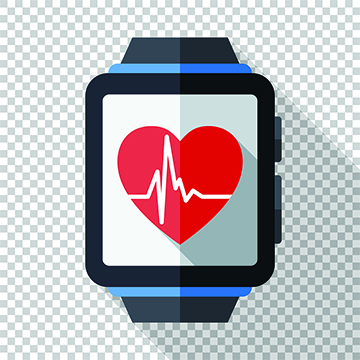Wearable Device for Atrial Fibrillation Monitoring
Wearable Device for the Early Detection and Monitoring of Atrial Fibrillation
Atrial fibrillation may be a “silent killer,” but the collaboration between a concerned doctor and a creative engineering team might be enough to stop surprise attacks from this heart arrhythmia.
As age increases, so does risk of Afib
Atrial fibrillation (Afib or AF) occurs when the upper heart chambers beat out of sync with the lower chambers. Especially in older patients, this irregular beating can lead to blot clots and increased risk of stroke. Between 2.7 million and 6.1 million people in the United States live with Afib and more than 166,000 deaths occur annually due to the condition.
But this “clinically silent” condition frequently goes undiagnosed in patients. Often, patients are not checked for AF until after they have already had their first stroke. The first line of defense is often blood thinners, but many doctors try to stay away from them due to the risk of bleeding. To avoid the risks of blood thinners, doctors may offer some type of monitoring for Afib.
A new way to “watch” for atrial fibrillation

Inspired by his patients, Emory University cardiologist Amit Shah, MD, MSCR proposed the development of a wearable detector for Afib pulse patterns. His role in this project aligns with his research interests of cardiac physiology, mobile health technologies, and risk prediction. According to Shah, the standard practice to track AF episodes is inserting an implantable loop recorder the size of a USB flash drive underneath the pectoral muscle above the heart. Considering the invasiveness of this technique, he wanted to “give people a watch option if they don't want to implant a loop recorder in their bodies after a stroke.”
Shah collaborated with Gari Clifford, DPhil, Shamim Nemati, PhD, and their engineering team in the Department of Biomedical Informatics (DBMI). Together, they developed an artificial intelligence (AI) algorithm for pattern recognition to diagnose AFib from pulse data. Shah wanted to design a product to ease the worries of his patients, motivating him to collect the pulse data that Clifford and Nemati’s engineering team used to develop the algorithm. Mainstream wearables such as smart watches often have a heart rate irregularity detector. However, their inconsistent performance encouraged the team to collaborate with Samsung to use a watch that collects raw pulse data that is analyzed by deep learning to diagnose Afib. Deep learning is a subset of machine learning that involves a neural network that mimics human brain processing to learn from large amounts of data. Unlike conventional machine learning, deep learning can process large volumes of raw data such as the pulse patterns collected through the watch.
Shweta Ghai, licensing associate in Emory’s Office of Technology Transfer, remarks that this invention “provides a robust and scalable solution” to “an asymptomatic silent killer” that is both “affordable and portable.”
Centering patients in the path to market

Soon, the hardware used to detect the pulse must continue to be tested, validated, and refined. Some watches constantly monitor pulse, but others only monitor it periodically. There’s a fine line between collecting as much data as possible while also preserving the battery life of the device; it needs to be efficient and integrate seamlessly into patients’ lives.
Shah notes that “prevention is key” when it comes to AF. Yet, questions remain about the usefulness of this invention. “How realistic is it for people to wear watches, or would they rather have an implanted device?” wonders Shah. Beyond the laboratory, real world aspects about the behavior of patients must always be considered throughout the development process.
— Masin Kearney
Techid: 17040
Read our technology brief